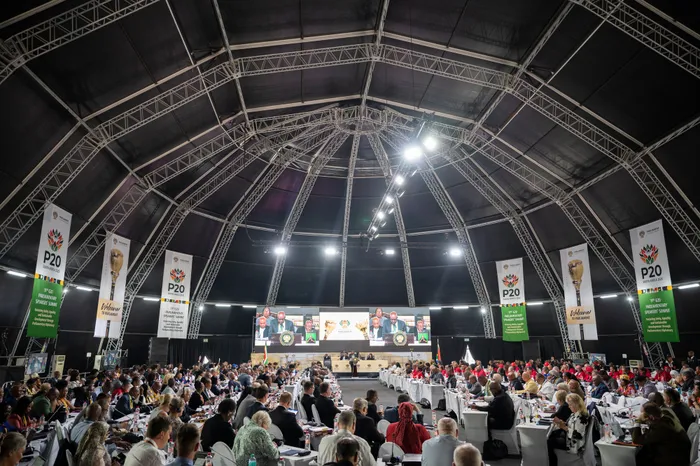Costs for Parliament's Dome reduced to R31.7 million after design rationalisation

Parliament and the Department of Public Works and Infrastructure will co-share the R31.7 million costs for the Dome, which is to be used as an alternative venue for the national legislature's plenary sittings.
Image: File
Public Works and Infrastructure Minister Dean Macpherson said the exclusion of some features in Parliament’s Dome has brought the costs down to R31.7 million.
The Dome, last used during former president Nelson Mandela’s funeral, will be a temporary venue for plenary meetings instead of hired venues.
Briefing the Joint Committee on Financial Management of Parliament on Wednesday night, Macpherson said there would be savings of R8m from the initial R39m projected expenditure.
“We have brought that amount down to R31.7m. We achieved R8m by rationalising designs and exclusion of non-essential features,” he said.
This comes after officials from the Public Works and Infrastructure Department (DPWI) and Parliament met recently to review the scope and cost of internal fittings in the Dome, which is not operational and is expected to be in use in January 2026.
Macpherson said they recognise that they have a role to play in assisting, but their funds were not unlimited, as whatever they spent did not come from additional funding from the National Treasury.
“Every rand we spend out of the baseline is money we can’t recoup, and we have to readjust our budget,” Macpherson said.
He proposed that the department and Parliament co-share the R31.7m, with each paying R15.8m.
“We are prepared to play our role and ensure that Parliament functions. That is dependent on Parliament accepting that. They spent R48m on venue hire last year,” Macpherson said.
He added that the Department of Employment and Labour has been engaged to manufacture chairs and tables, and that they ensure that the tender process for the internal fitting was shortened and aligned with applicable legislation and regulations, Macpherson said.
National Assembly Speaker Thoko Didiza said in terms of the timeline for reconstruction, certain elements were not anticipated at the beginning, such as the time it will take to demolish and provide funds to hire alternative venues.
Didiza said it was important to note the financial issues and that the department has no resources but was willing to use what it has.
She added that it was required of Parliament to meet the department halfway as requested, given that there was never financial planning for an alternative venue following the fire.
“We know the cost figures and the request that we co-share. Parliament does not have that kind of money as we speak.
“We can now, jointly with Public Works, approach National Treasury to say this is what we would like to see happening and we can get the resources to meet what members want,” she said.
Simon Mashigo, Parliament’s special project manager, made a presentation on three models the national legislature could choose from.
The first is hybrid meetings that will not incur additional costs as MPs have allowance for data, but some members may face connectivity challenges and do not cater for special events.
The second option is the hybrid meetings with the hiring of venues for special events, with a projected cost of R33.8m for venues, and R14.2m for audio-visual and broadcasting equipment.
The third option was the use of the dome after completion of the internal fit-out.
“The advantage of this option is that DPWI will own the equipment in the long term,” read the report.
The department is expected to advise on the feasibility of the use of the Dome after the rebuilding project is completed, and the audio-visual and broadcasting equipment will be used in Parliament buildings once the Dome is decommissioned.
In backing the Dome, Mashigo said: “The Dome as a venue is viable for value for money, meets requirements of Parliament and predictability to be available at all times, and meets safety requirements as well comfort of MPs.”
The MPs heard that the Dome will have a chamber, three executive offices to be used as holding rooms, and audio-visual and broadcasting hiring, among others.
Among the features excluded are two 40-seater committee rooms, 100-seater committee rooms for mini-plenaries, a dining room facility for 400 persons, and a car drop-off for Presidency Protection Services.
Fitting installation at the Dome, which has not been operational since April, is expected to be completed in January 2026.
mayibongwe.maqhina@inl.co.za